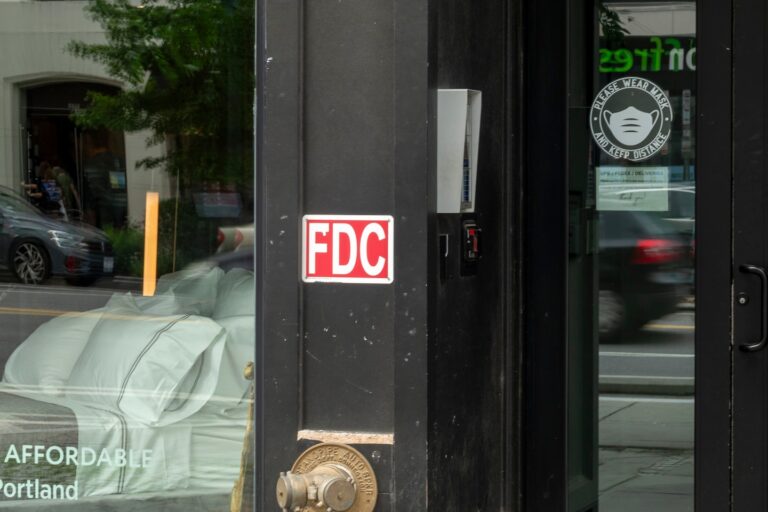Experts say the expected surge in infections over the summer was due to a combination of the hottest weather in decades in the Tokyo metropolitan area that kept people indoors, travel during school holidays and the spread of variants that evade vaccines and immunity from previous infection.
While nothing compared to previous surges, the number of cases remains worryingly high, particularly in Maryland, which is one of six states with “very high” levels of coronavirus in its wastewater, according to a tracking map from the Centers for Disease Control and Prevention. Virginia is one of more than a dozen states at the “high” level, where state public health officials say they’ve seen a steady increase in emergency department visits since early June. The CDC map did not include data for Virginia.
Elena Diskin, a respiratory disease epidemiologist with the Virginia Department of Health, said in recent years, seasonal surges in cases have occurred in the middle of winter, with peaks occurring around New Year’s and in the summer.
“We didn’t think we’d get it in the middle of summer,” said Cindy Carlson, who contracted COVID-19 with her husband, Bruce, after seeing Three Dog Night’s sold-out show at the Birchmere in Alexandria.
At first, it seemed like Bruce Carlson’s allergies had gotten worse. Then his symptoms worsened, his cough made his muscles ache. Cindy felt fatigued and her fever rose to 102.5 degrees. Drugstore and supermarket shelves were swept clean of tests, but eventually the characteristic double red lines that indicate a positive test were found.
“This time, the second line showed up right away,” Cindy Carlson said. “We didn’t have to wait 15 minutes.”
In some places, including Montgomery County, libraries are offering free at-home test kits while supplies last, but many are racing to buy the last boxes on pharmacy shelves.
CDC guidelines treat COVID-19 like any other common respiratory virus, advising people who are sick to isolate until their symptoms improve or they’ve been fever-free for 24 hours. If you plan to meet with other people indoors over the next five days, officials urge you to wear a mask, maintain your distance, and get tested — all things the CDC recommends whenever the coronavirus is spreading widely in a community.
Even Montgomery County’s top public health official, Kisha Davis, said she sees rising cases as neighbors, fellow church members and even President Biden test positive.
“The president having COVID-19 is a reminder that COVID-19 is still out there,” she said, “and at this point, it’s probably going to be with us forever.”
Davis said the current variant does not appear to cause more severe illness, but more people are reporting gastrointestinal symptoms in addition to the fever, sore throat, cough, aches and headaches that are characteristic of COVID-19.
“Whether it’s COVID, the flu or RSV, please stay home until you’re better. That really helps everyone,” she said.
Cheryl Fake Ryan, 62, is rethinking how she approaches future large events and travel after contracting COVID-19 after traveling to see Taylor Swift in June. Ryan isolated herself in her Wesley Heights home during her illness and had to cancel a trip to see her 92-year-old mother in Houston.
Now almost a month later she is still coughing.
“During the pandemic, I would wear masks on planes and in airports and I thought, ‘What a great idea to prevent any kind of infection!’ Then, of course, the world seemingly went back to normal and no one was wearing masks,” she said. “Now, especially when I’m around large groups of people like this, I think about masks a lot.”
Amesh Adalja, an infectious disease expert and senior scholar at the Johns Hopkins Center for Health Security, said he’s noticed an increase in patients reporting COVID-19-like symptoms and has heard of more cases among his friends, none of which is surprising.
“Last summer they asked us if we were surprised and I said no. The summer before that they asked us if we were surprised and I said no,” he said.
Adalja said despite the rising number of cases, people should be reassured that there are more tools available to prevent, treat and manage COVID-19 than other respiratory viruses, including wastewater surveillance, vaccines and the antiviral drug paxlovir.
“We need to realize that this is an endemic respiratory virus,” he said. “It’s impossible to avoid it completely.”
As a politician, Montgomery County Councilwoman Dawn Luedtke of Ashton shakes hands frequently and keeps hand sanitizer on hand. Still, the virus “crept up” on her and her 16-year-old stepson., At first, I thought yard work was causing my allergies.
“The heat levels and other factors make it a little less likely that it’s coronavirus. In the winter, it makes it more likely that it’s coronavirus,” she said.
Luedtke, who has an autoimmune disease, said she doesn’t normally wear a mask, “but now seeing this increasing in the community, I’m interested in wearing one in indoor gathering spaces.”
Cheryl Coogan, 65; The mayor of Arlington had begun to suspect he might be immune to the coronavirus after having been infected several times but never contracted it himself – even though he had worn a mask on airplanes and public transportation, avoided crowds, and rarely dined indoors at restaurants for the past four years.
But last month, she said, her lucky streak came to an end when she began coughing in the middle of the night, and an oximeter her daughter bought at the peak of the pandemic showed her blood levels were dropping. Her fever rose to 102.7 degrees.
“I’m a tough old guy and I don’t get scared easily,” Coogan said, “but this scared me.”
Nearly three weeks after she first tested positive, she still has symptoms of stuffy nose, sneezing and coughing.
“We’ve been really careful,” she said, “but now it seems there’s no way to avoid it.”
Kyle Swenson contributed to this report.

